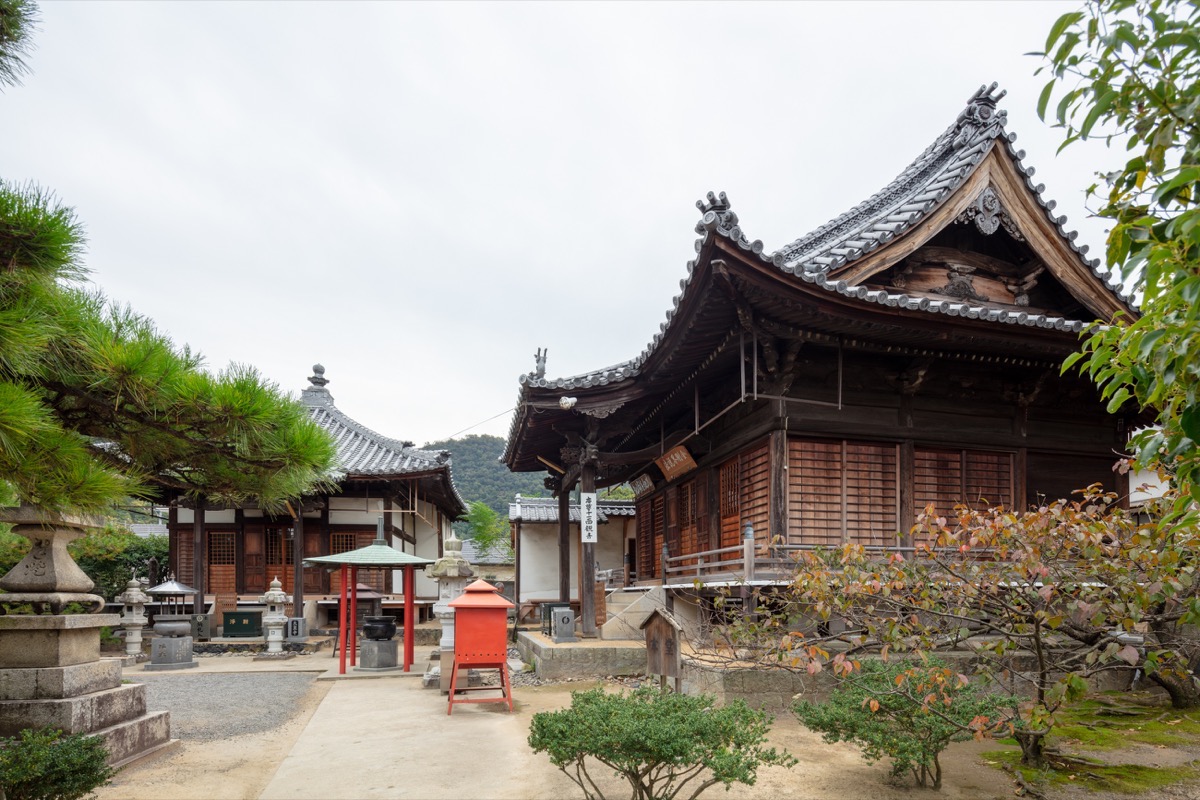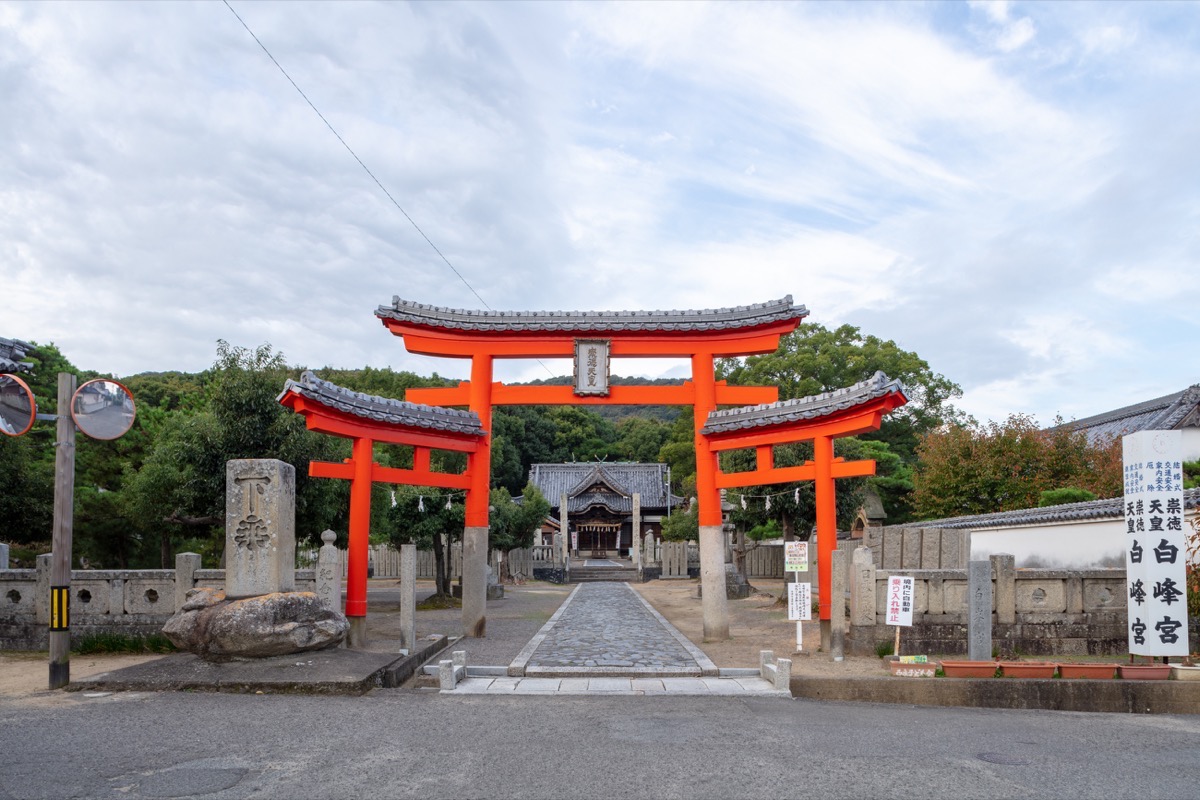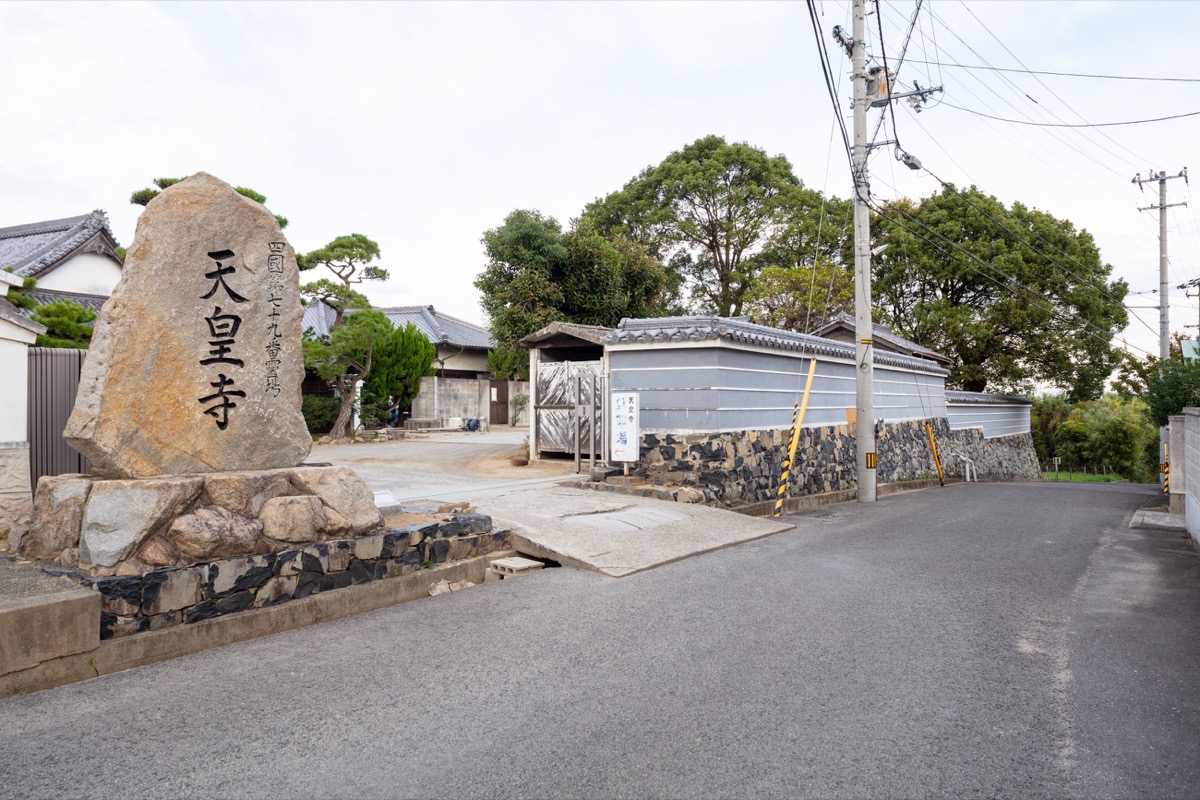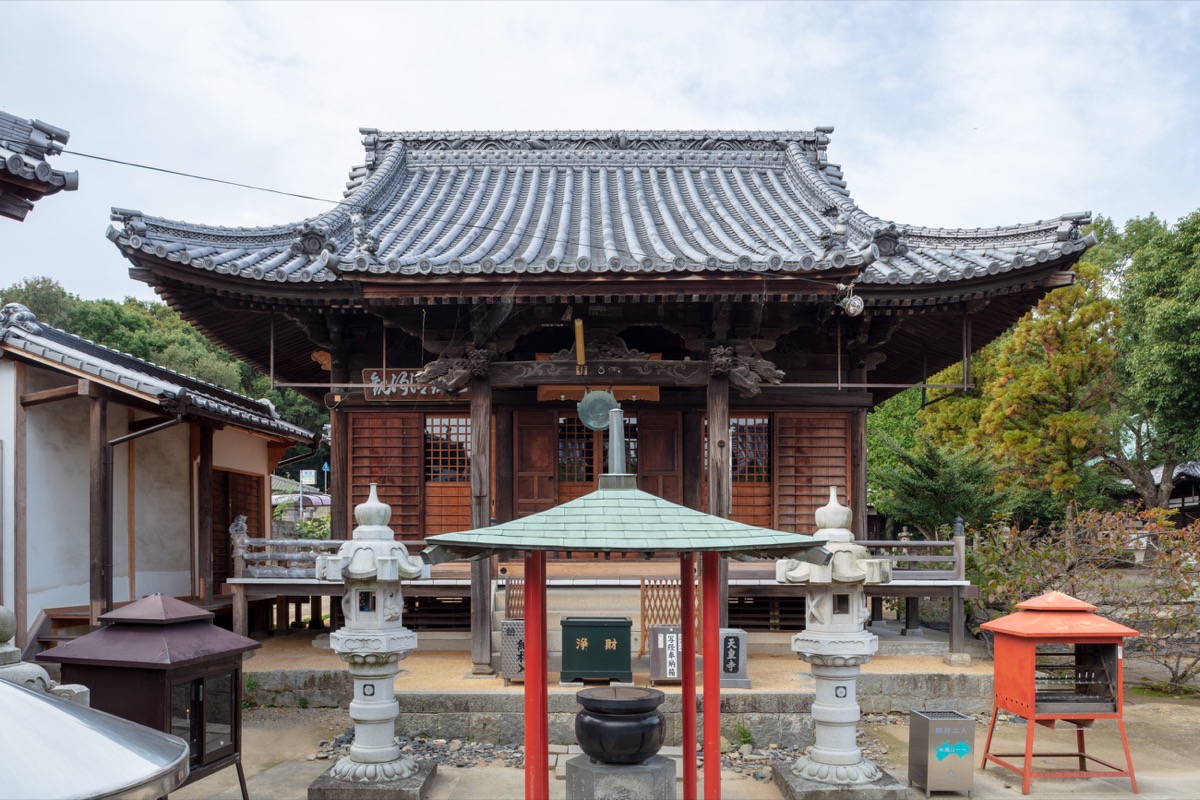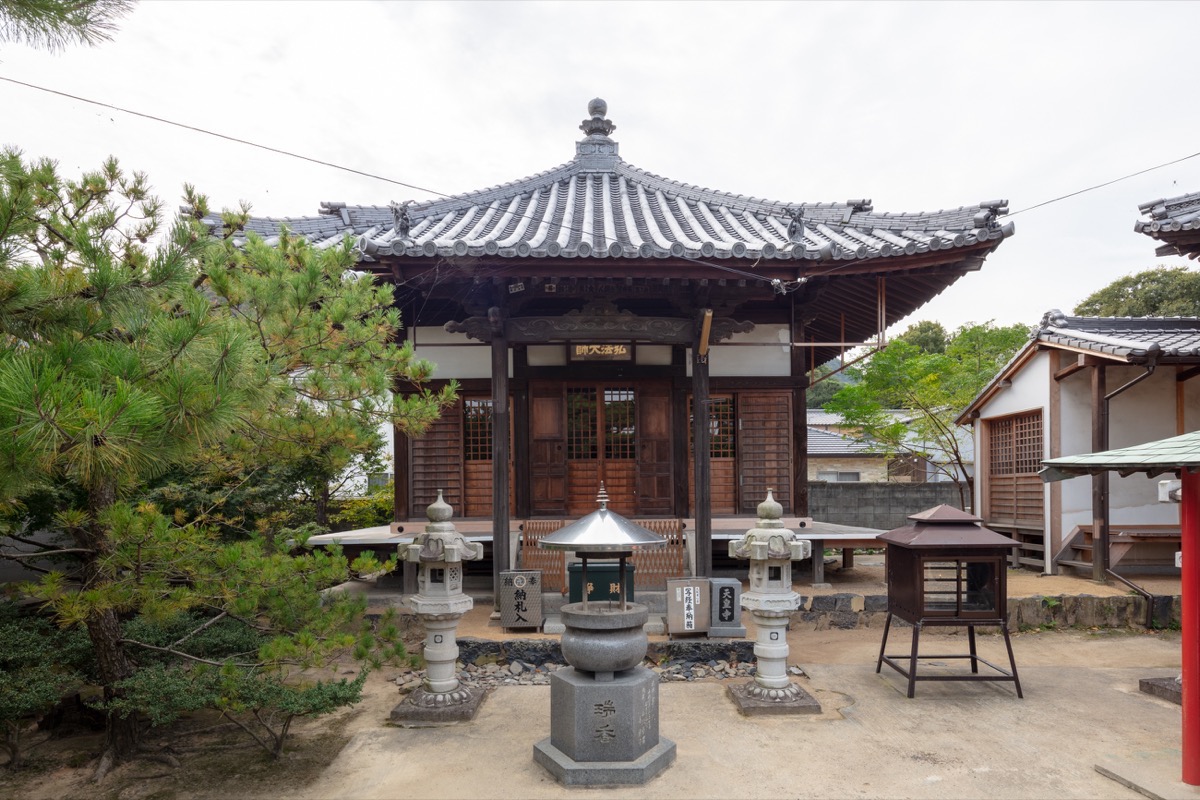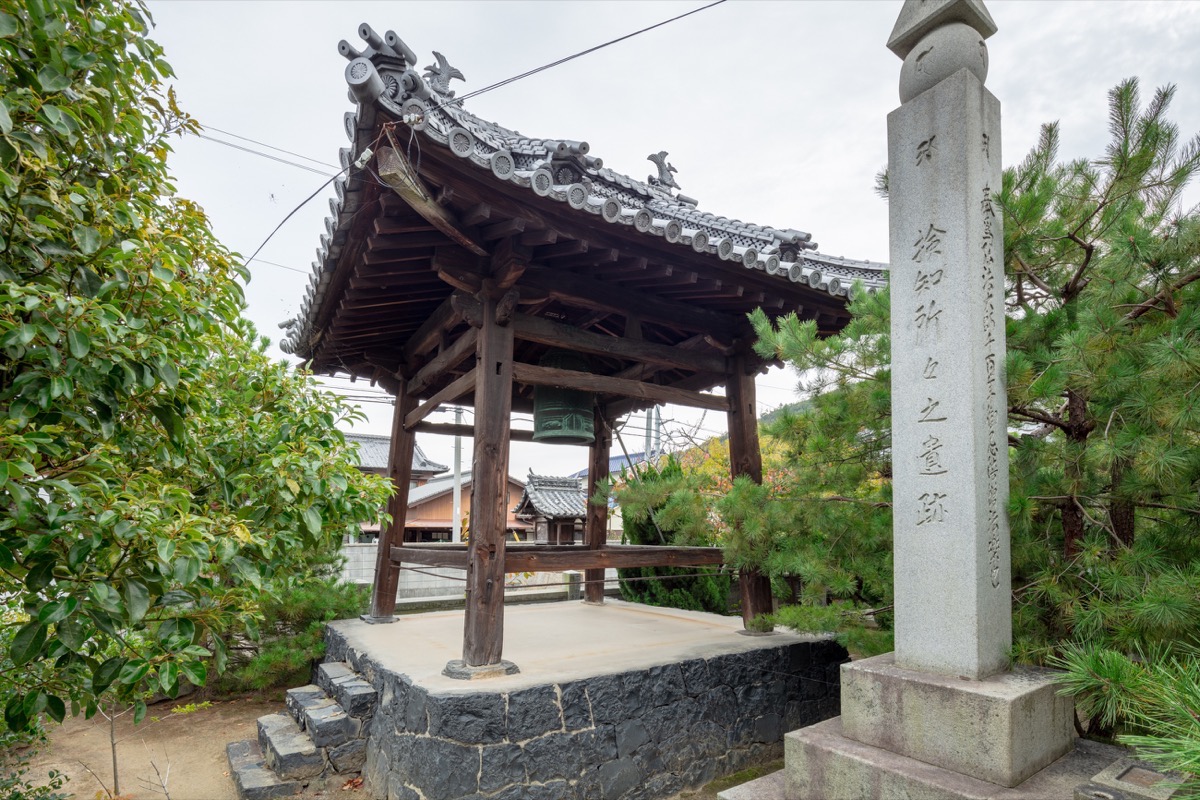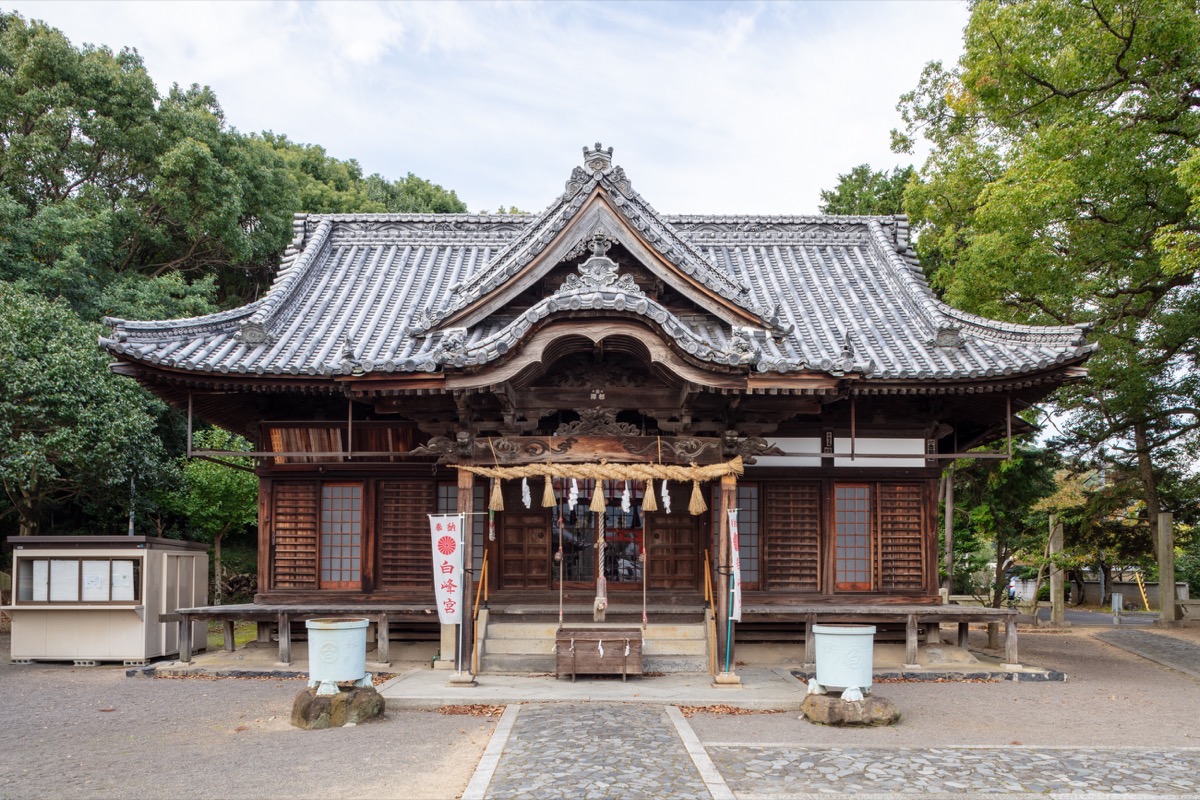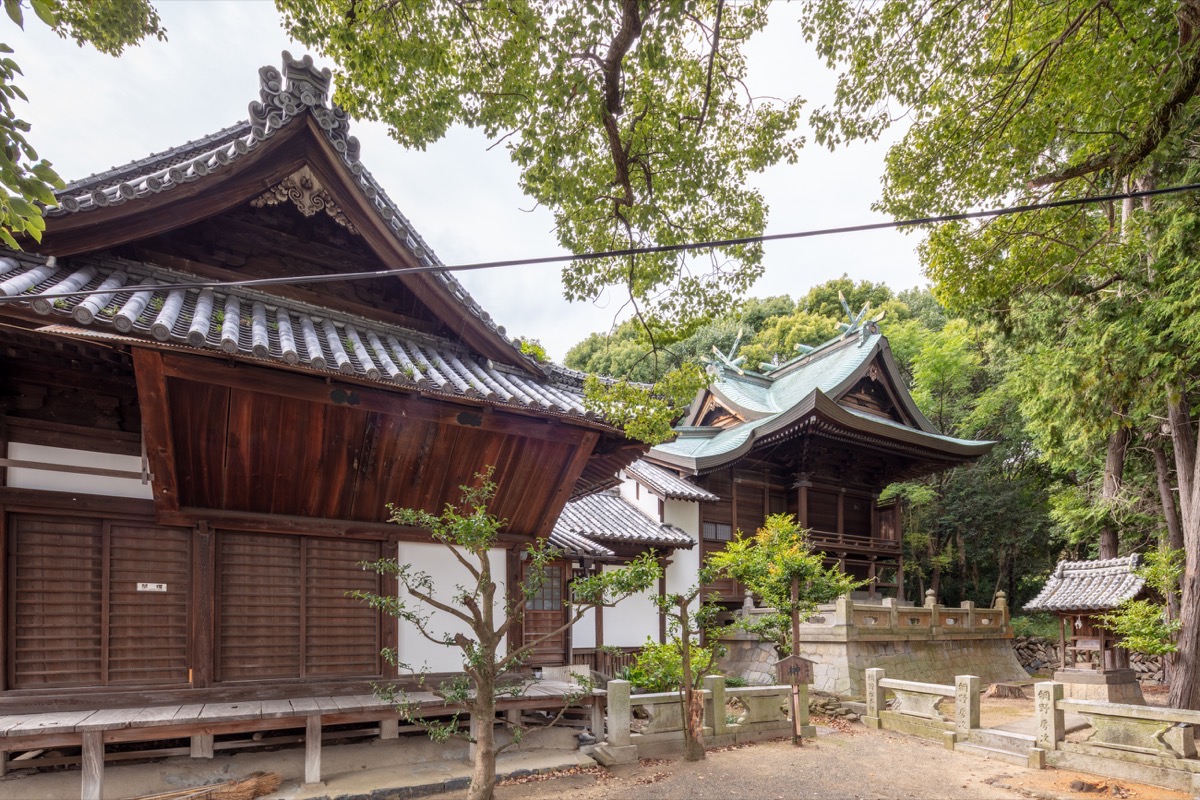Tennoji TempleThe 79th Temple Tennoji Temple
| District | Shikoku Henro pilgrimage | Period | ー |
|---|---|---|---|
| Set Content/Set Date | |||
| Owner | Tennoji Temple | Location | 1713-2 Tenno, Nishinoshocho, Sakaide, Kagawa |
Tennoji Temple, the 79th sacred spot on the Shikoku Henro pilgrimage, is located in the foothills of Mt. Kana.
According to writings documenting the temple’s origins and history, Tennoji Temple was built during the Nara period in 742 by Gyoki. It is said that when Kobo Daishi (Kukai) visited the temple in the Heian period (794-1185), he met Kanayama Buddha, the patron of god of Mt. Kana in the Yasoba area, who entrusted him with a sacred gem.
Kobo Daishi buried the gem at the top of the mountain, and following the ways of Buddhism, named the temple Manishuin (Wish-Fulfilling Gem Temple).
It is also believed that Kobo Daishi carved an Eleven-Faced Kannon statue, flanked by Amida Buddha and Aizen Myo-o (Ragaraja), out of a sacred tree from the Yasoba area, and enshrined it as the temple's principle image of worship.
Although Manishuin Temple was abandoned during the Meiji Restoration (1868), Koshoin Temple was moved to this area in 1887, and has continued to this day as the Kinkazan Koshoin Tennoji Temple.
This temple does not have a "mountain gate", which is typical for temples, but rather a vermillion gate with tile roofing, called miwa torii. Pass through this miwa torii and continue along the promenade to find Shiraminegu Shrine, which was built to appease the spirit of Emperor Sutoku. To the left of the promenade, you will find the main hall and Daishido Hall of Tennoji Temple.

